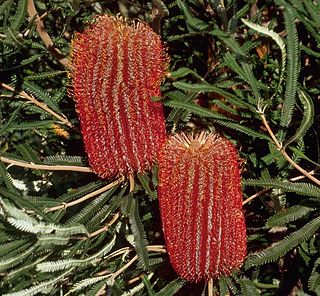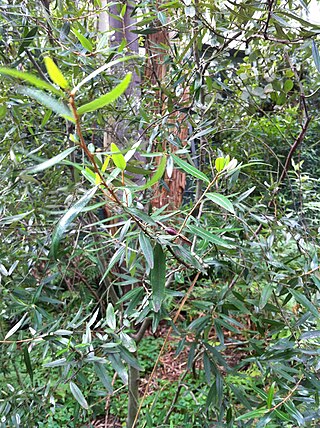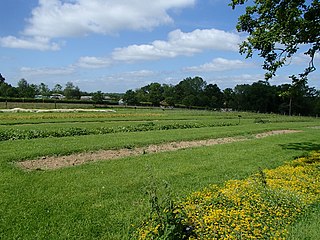
Royal Botanic Gardens, Kew is a non-departmental public body in the United Kingdom sponsored by the Department for Environment, Food and Rural Affairs. An internationally important botanical research and education institution, it employs 1,100 staff. Its board of trustees is chaired by Dame Amelia Fawcett.

A seed bank stores seeds to preserve genetic diversity; hence it is a type of gene bank. There are many reasons to store seeds. One is to preserve the genes that plant breeders need to increase yield, disease resistance, drought tolerance, nutritional quality, taste, etc. of crops. Another is to forestall loss of genetic diversity in rare or imperiled plant species in an effort to conserve biodiversity ex situ. Many plants that were used centuries ago by humans are used less frequently now; seed banks offer a way to preserve that historical and cultural value. Collections of seeds stored at constant low temperature and low moisture are guarded against loss of genetic resources that are otherwise maintained in situ or in field collections. These alternative "living" collections can be damaged by natural disasters, outbreaks of disease, or war. Seed banks are considered seed libraries, containing valuable information about evolved strategies to combat plant stress, and can be used to create genetically modified versions of existing seeds. The work of seed banks often span decades and even centuries. Most seed banks are publicly funded and seeds are usually available for research that benefits the public.

Damasonium alisma is a species of flowering marsh plant known by the common name of starfruit. Its native range includes parts of Great Britain, France, Portugal, Spain, Italy, Greece, Russia, Ukraine, Moldova, and Kazakhstan.

Wakehurst, previously known as Wakehurst Place, is a house and botanic gardens in West Sussex, England, owned by the National Trust but used and managed by the Royal Botanic Gardens, Kew. It is near Ardingly, West Sussex in the High Weald, and comprises a late 16th-century mansion, a mainly 20th-century garden and, in a modern building, Kew's Millennium Seed Bank. Visitors are able to see the gardens, the Mansion, and also visit the seed bank. The garden today covers some 2 km2 and includes walled and water gardens, woodland and wetland conservation areas.

Gene banks are a type of biorepository that preserves genetic material. For plants, this is done by in vitro storage, freezing cuttings from the plant, or stocking the seeds. For animals, this is done by the freezing of sperm and eggs in zoological freezers until further need. With corals, fragments are taken and stored in water tanks under controlled conditions. Genetic material in a 'gene bank' is preserved in a variety of ways, such as freezing at -196 °C in liquid nitrogen, being placed in artificial ecosystems, or put in controlled nutrient media.

Banksia brownii, commonly known as feather-leaved banksia or Brown's banksia, is a species of shrub that grows in southwest Western Australia. A plant with fine feathery leaves and large red-brown flower spikes, it usually grows as an upright bush around two metres (6.6 ft) high, but can also occur as a small tree or a low spreading shrub. First collected in 1829 and published the following year, it is placed in Banksiasubgenus Banksia, section Oncostylis, series Spicigerae. There are two genetically distinct forms.
Australian Seed Conservation and Research (AuSCaR) is an Australian network of agencies involved in the collection, storage, research and sustainable use of seeds for native plant conservation. It is a member of the Kew-based Millennium Seed Bank Partnership. It was established in 2007 to assist with seed-banking and ex situ plant conservation of the Australian flora. The aim of the network is focused particularly on achieving Target 8 of the Global Strategy for Plant Conservation by 2010: "60% of threatened plant species in assessable ex situ collections, preferably in the country of origin, and 10% of them included in recovery and restoration programs".

Sir Henry Philip Price, 1st Baronet was a British businessman and philanthropist.
The Great Plant Hunt is a primary school plant science learning initiative, developed by the Royal Botanic Gardens, Kew, and funded by the Wellcome Trust. It is supported by DEFRA, Sir David Attenborough, and Science Learning Centres in the UK.

Kunming Institute of Botany, or KIB, founded in 1938, is a research institution in the field of Botany, which is located in Kunming, the capital of Yunnan Province, China.
Roger Smith is a UK biologist and founder of the Millennium Seed Bank Project. He was awarded an OBE in the 2000 New Year Honours List for services to the project.

Kew Gardens is a botanic garden in southwest London that houses the "largest and most diverse botanical and mycological collections in the world". Founded in 1840, from the exotic garden at Kew Park, its living collections include some of the 27,000 taxa curated by Royal Botanic Gardens, Kew, while the herbarium, one of the largest in the world, has over 8.5 million preserved plant and fungal specimens. The library contains more than 750,000 volumes, and the illustrations collection contains more than 175,000 prints and drawings of plants. It is one of London's top tourist attractions and is a World Heritage Site.

Nematolepis wilsonii is an endangered shrub or small tree species which is endemic to Victoria in Australia. It may grow up to 10 metres tall and has mottled bark. The shiny green leaves are 30 to 80 mm long and 5 to 15 mm wide, and have silvery scales underneath. Star-shaped white flowers are produced in groups of 1 to 9 in the leaf axils in spring.
The Oman Botanic Garden is a development of the Diwan of Royal Court in Oman, with plants, landscapes, and cultural traditions native to Oman. The gardens are located on 423 hectares in Al Khoud.

Pyrus cordata, the Heart-leaved pear or Plymouth pear, is a rare wild species of pear belonging to the family Rosaceae. It gets its name in Spanish, Portuguese and French from the shape of its leaves. In the UK, it is known as Plymouth Pear after the city of Plymouth in Devon, where it was originally found in 1870 The Plymouth pear was one of the British trees to be funded under English Natures Species Recovery Programme.

The World Checklist of Selected Plant Families was an "international collaborative programme that provides the latest peer reviewed and published opinions on the accepted scientific names and synonyms of selected plant families." Maintained by the Royal Botanic Gardens, Kew, it was available online, allowing searches for the names of families, genera and species, as well as the ability to create checklists.

The Australian PlantBank is a seed bank located in the Australian Botanic Gardens, Mount Annan. The seedbank is part of the Millennium Seed Bank Project. The SeedBank replaced the former NSW Seedbank as part of an upgrade.

The UK Native Seed Hub (UKNSH) is a project of the Royal Botanic Gardens, Kew's Millennium Seed Bank Partnership growing and distributing seeds of UK native plant species. It is in part a response to the 2010 report Making Space for Nature by Sir John Lawton. The project, located at Wakehurst Place, in West Sussex, in the High Weald of southern England, is dedicated to enhancing the resilience and coherence of the UK's ecological networks by improving the quality, quantity, and diversity of UK seed species available for use in conservation, rehabilitation, and restoration projects.
The Australian Grains Genebank (AGG) is a national center for storing genetic material for plant breeding and research. The Genebank is in a collaboration with the Australian Seed Bank Partnership on an Australian Crop Wild Relatives project. It is located at Grains Innovation Park, in Horsham, Victoria, Australia.
The European Native Seeds Conservation Network (ENSCONET) is a conservation group for the preservation of wild species by maintaining a germplasm bank. It is made up of 24 institutions from 17 member states of the European Union, as well as five associate members. The network is coordinated by the "Millennium Seed Bank" of the Royal Botanic Gardens, Kew, United Kingdom and is founded under the auspices of the 6th "Research Framework Program" of the EU, and covers 5 of the 6 European biogeographic regions.



















